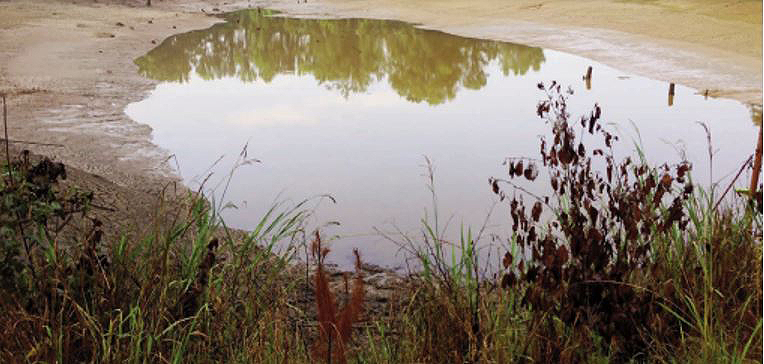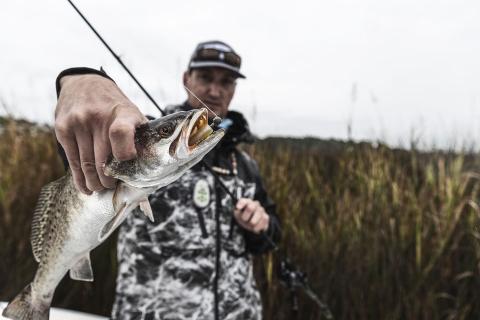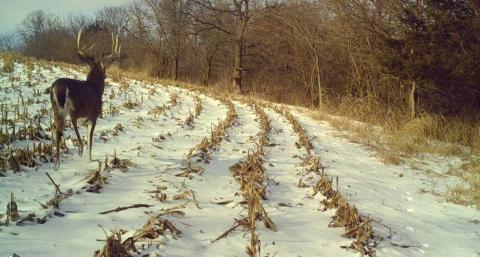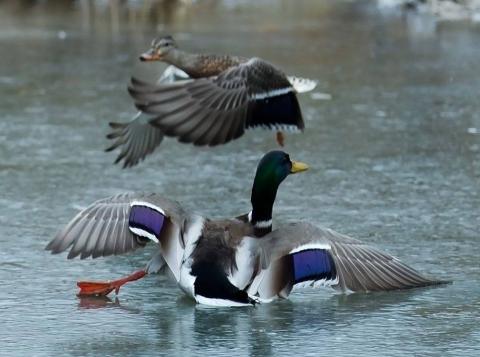Barry W. Smith | Originally published in GameKeepers: Farming for Wildlife Magazine
Many of you watch programs on television that depict changing a structurally sound old house into a gorgeous home, and pond restoration isn’t that much different. Some old ponds can be economically renovated and turned into attractive lakes and great fishing holes. The fall is a great time to work on these old ponds, as it is typically the driest time of the year. Draining the pond in late summer or early fall allows the pond bottom to dry where machinery can begin to deepen the typically shallow areas and create great fish habitat.
Before You Begin
In old ponds, be sure to inspect the drain pipe, spillway and dam, and refurbish these if necessary. It is also a good time to think about new stocking strategies to help create the type of fishing you desire (see Don Keller’s article about the 30:1 pond stocking strategy). Don’t forget to renovate the puddles that may be present before you think of restocking!
Once you drain the old pond, you begin to see why the physical features were no longer conducive to fish production and/or fishing. The shallow banks and coves where water levels were less than 2 feet do not provide good fish habitat or fishing areas. They do, however, provide ideal habitat for aquatic weed growth, causing problems throughout most of the year.
Many areas that used to be deep are now silted from erosion or silt runoff from the watershed. Areas that used to be used for spawning are now covered with a foot or more of silt. Renovating and deepening the shallow edges also offers an opportunity to create gravel spawning areas, underwater islands, earthen piers, and travel channels from the deeper areas to the shallower areas of the pond. It also allows you to create and install various types of structure to attract and hold game fish throughout most of the year. We like to see this type of structure because it “shortens the time between bites,” something every lake manager wants to accomplish for their clients.
Getting Started with Pond Restoration
This article contains many pictures that illustrate things you want to do during your renovation as well as many things you do not want to do. Look at these pictures carefully before you begin your renovation and your lake makeover will turn out to be a project you will be proud of.
In an effort to expand the size of this old pond, dirt was removed from the upper end and dumped on top of the existing dam. Note the steep vertical slope on both sides of the dam. The front side of the dam should be a 3:1 slope and the back side should be a 5:1 so that it can be safely mowed with a tractor.
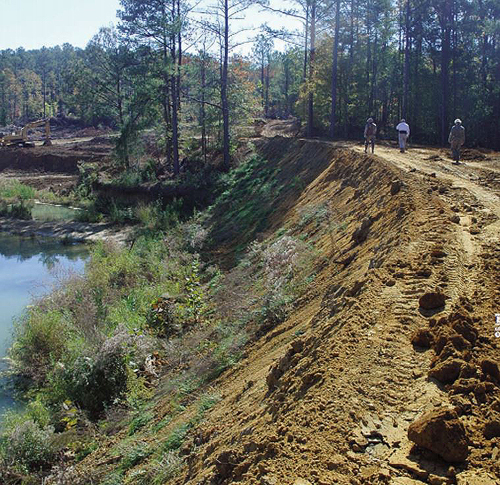
If the pond has a large watershed, in excess of 10:1, it is a good idea to rip-rap the spillway to prevent severe erosion. Flood water can quickly erode the back side of the dam where the spillway is located and cause structural damage.
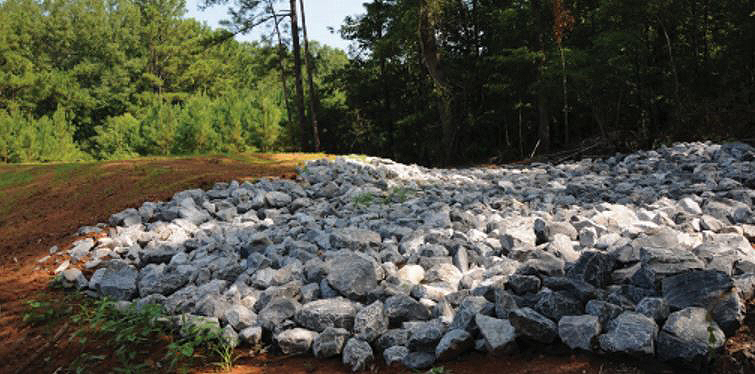
The dam of this old pond was renovated and the slope gentle enough that the dam could be safely mowed with a tractor and bush-hog. Keeping the back side of the dam mowed prevents the long-term growth of trees and maintains a clean environment that discourages the presence of snakes and other varmints.
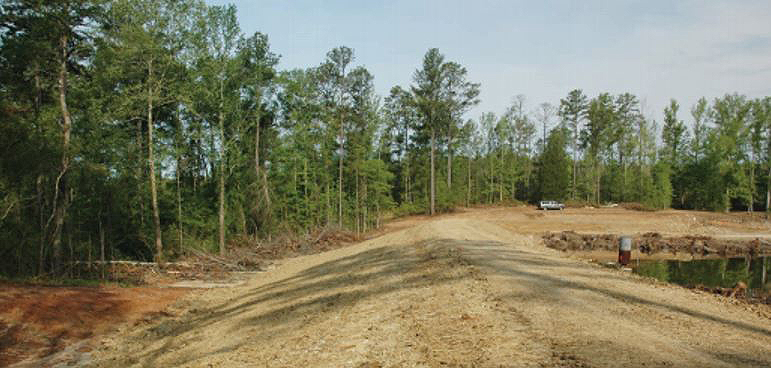
In renovating the edges of old ponds, do not cut the banks vertically, as in this picture. Wave action will cause vertical banks to wash and deposit loose silt at the bottom of the cut. All banks should be graded at a 3:1 slope
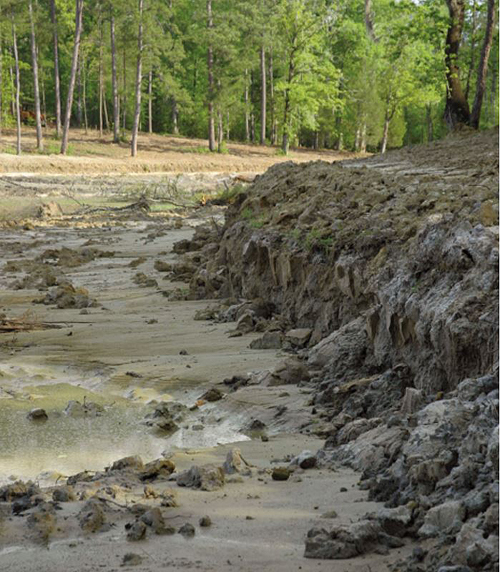
Be sure to measure the height of the dam with a surveyor’s level so that you avoid this mistake, a low spot in the middle of the dam that can cause the dam to wash out during times of high water. The dam should have 2 to 3 feet of freeboard above normal pool, and the overflow pipe or spillway should be designed to carry the excess water so that it does not flow over the dam. If you have a large watershed, consult an engineer to properly size your pipe and spillway.
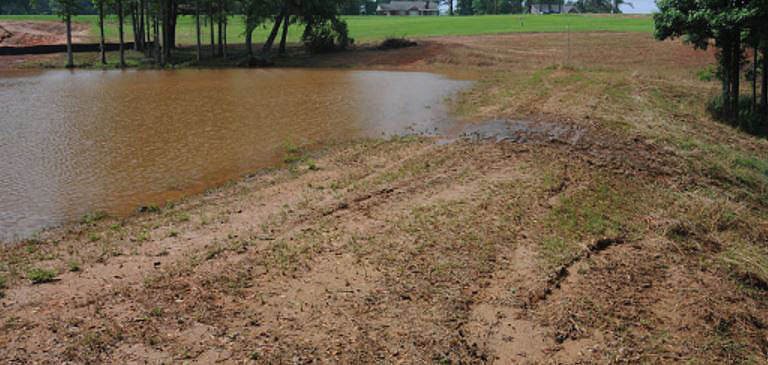
Excess dirt from shallow areas can be used to develop underwater islands — great structures for bass. Also, some trenches leading from the deep water to the shallow edges are good travel routes for feeding bass.
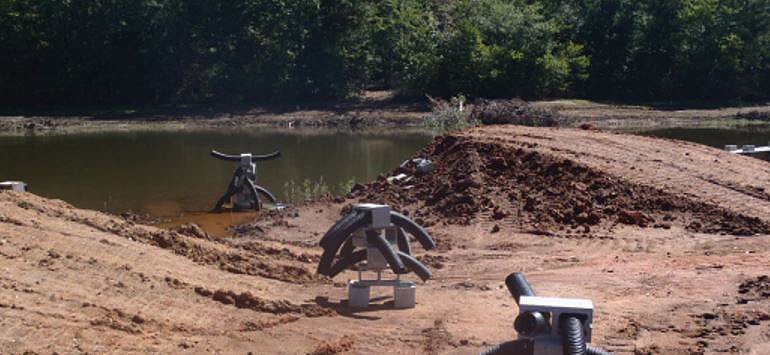
This old pond has a lot of shallow edges that need to be deepened to create proper habitat for fish and reduce the tendency to grow vegetation … a constant problem in shallow water.
